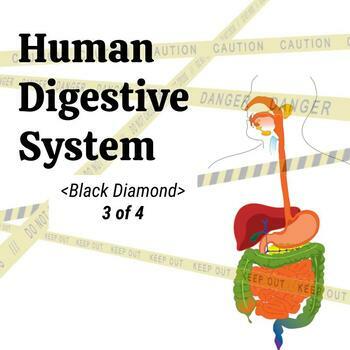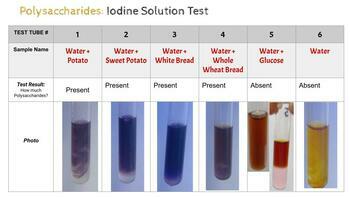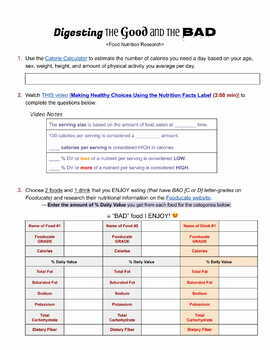Human Digestive System - Middle School Science 3of4
- Google Drive™ folder

Also included in
- Progression of Guiding Questions: How does our body turn FOOD into POOP?How does our food fuel our cells?What is special about each biomolecule?How can you use the biomolecule tests to solve a “crime”?Progression of Learning Targets: I can analyze the structure and function of organs that make up thPrice $30.00Original Price $40.00Save $10.00
Description
Guiding Question: What is special about each biomolecule?
Learning Target: I can investigate the uniqueness of carbohydrates which our body uses to keep us alive!
Students start by learning about Metabolism using a khan-academy-style notetaking video. Then they will explore the nutritional quality of their favorite foods by researching and exploring Nutritional Fact Labels and browsing online databases of food’s nutritional value. As students continue through the playlist they will focus on the digestion of carbohydrates. This will prepare them to conduct the two experiments that close out the playlist. In the two experiments students use Iodine to test for Polysaccharides and Benedict's Reagent to test for Monosaccharides in common food items.
This product contains assignments that lead students toward answering a guiding question via a Learning Target. Students accomplish this by completing digital assignments using Google Docs, Slides, and Forms. They will also use assignments to collect data and add notes into an interactive science notebook. (In my classroom all students have a composition notebook for this purpose). An “end of playlist” formative quiz is also included.
These playlists progress through the Ski Slope Model of Teaching. This resource is part 3 of 4 in a series of tiered playlists that develop student's depth of knowledge as they complete assignments that progress through Bloom's taxonomic hierarchy. The four playlists are, in order; (Green Circle), [Blue Square], <Black Diamond>, and <>Double Black Diamond<> playlists. Each playlist builds upon the one prior and grows in complexity and depth.
This resource contains materials which address aspects of the following Next Generation Science Standards (NGSS): NGSS MS-LS1-1, NGSS MS-LS1-2, NGSS MS-LS1-3, NGSS MS-LS1-7
*These resources have been used in a real-life middle school science classroom with real-life students in Colorado!






